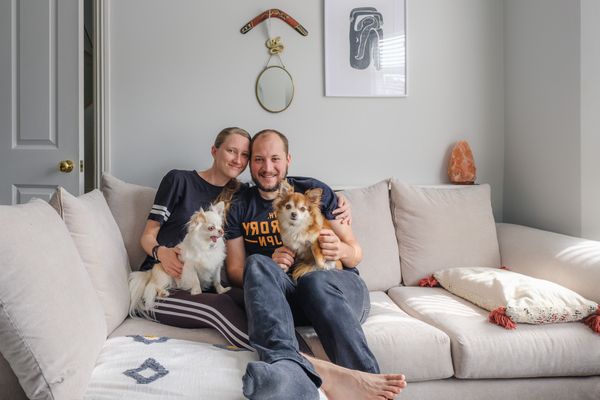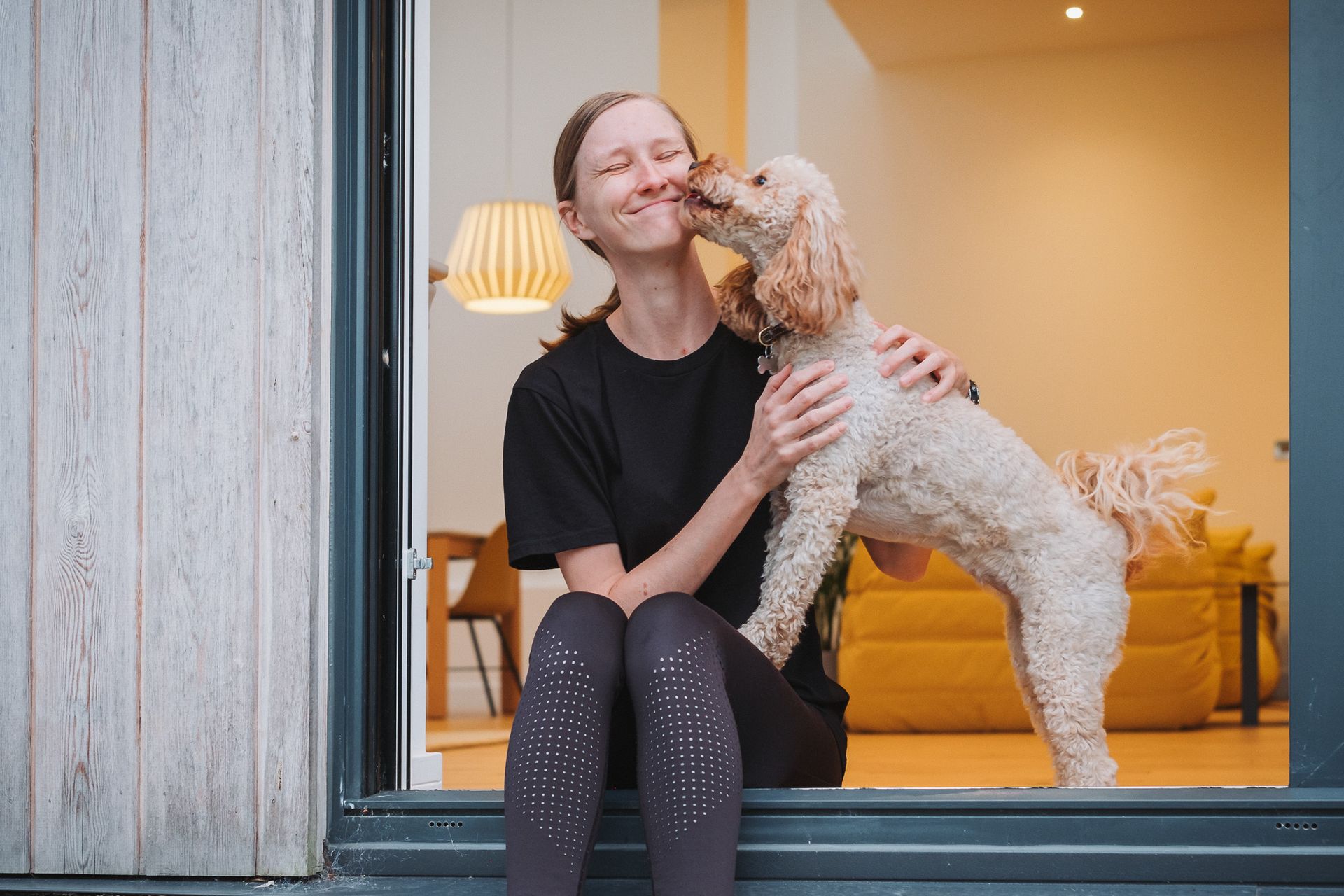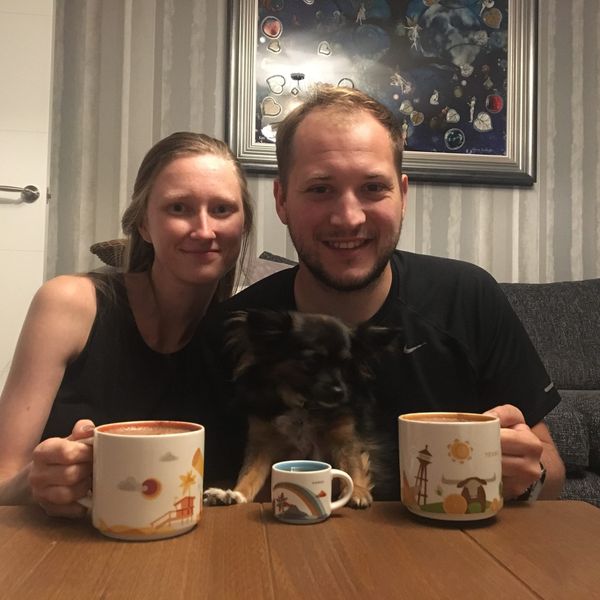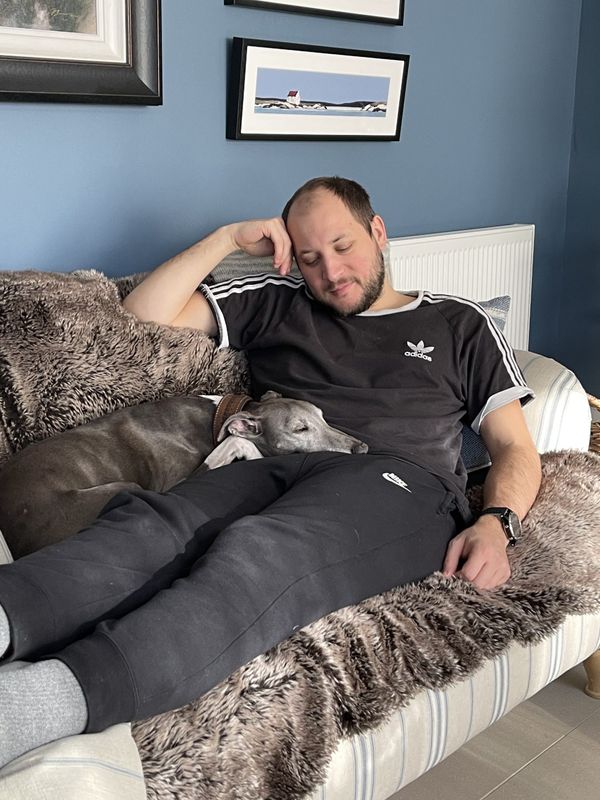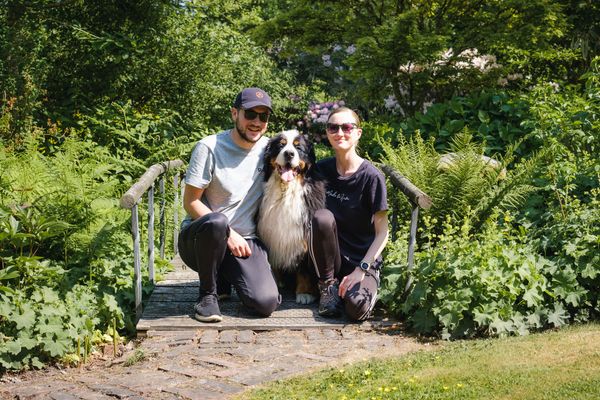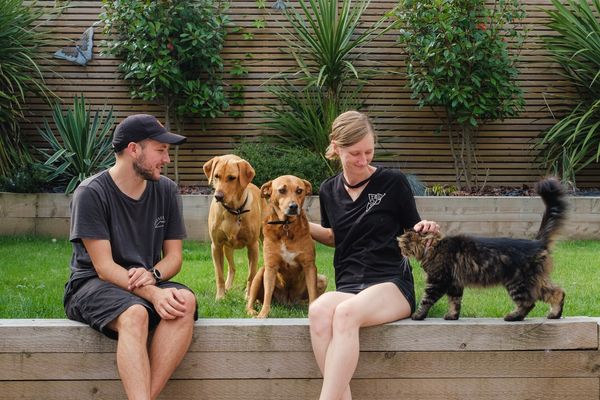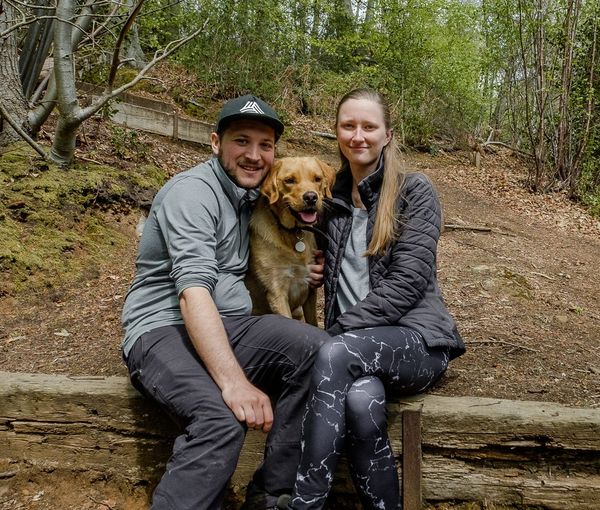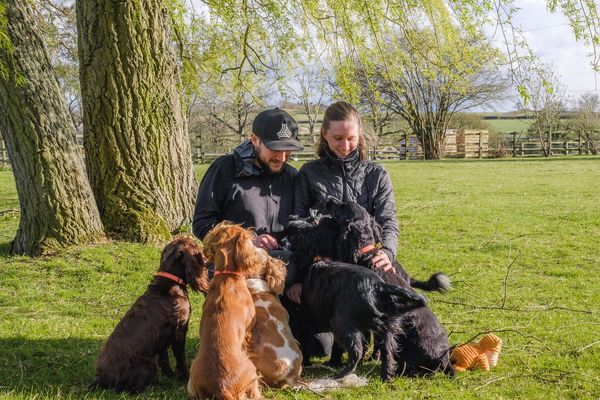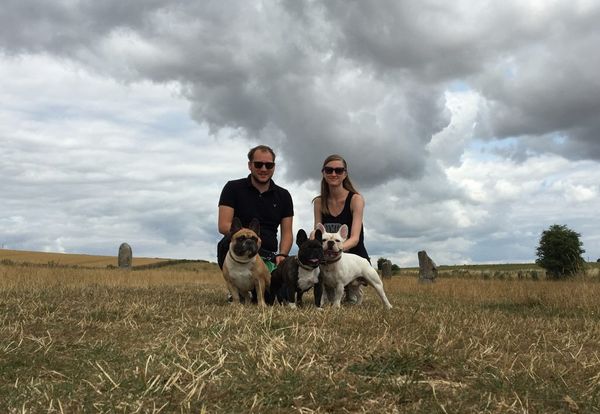It’s the biggest misconception about our job as full time pet sitters: Pet sitting is easy, right? You live in other people’s houses, walk their dogs, use their WiFi and their TV and just enjoy living in a home with no bills or mortgage to worry about. While there are definite perks to being a live-in pet sitter, equally there are a LOT of responsibilities that a professional pet sitter has to carry out at each sit. If you’re in the camp of ‘It’s an easy job’, read on to find out more about our daily responsibilities as pet sitters.
Table of Contents
Adaptability
One of the best traits for a pet sitter to have is adaptability. We’d go as far as to say it’s one of the most important ones, as every single house sit we’ve completed (over 100 and counting!) has required us to carry out different duties, be flexible when plans change at the last minute, and stay constantly alert while pet sitting. No pet sit is the same, as each one will have their own routine and each owner has their own way of caring for their pets. Whether there are different pets or different home care tasks to complete, our main responsibility as live-in pet sitters is to fit seamlessly into our clients’ routines, to carry out the responsibilities given to us and follow the owner’s instructions to the letter.
One week we’ll be in charge of 2 easy-going cats who only require feeding, while the next week we’ll care for a menagerie of 3 dogs, 2 puppies, 5 cats, horses, peacocks and more! This means that we need to always be adaptable and ready to change up our own routine to match the duties on the sit.
Looking after pets
Obviously as live-in pet sitters one of our main responsibilities is to care for pets! Owners expect us to not only feed and exercise their fur babies, but to also make sure the pets are as comfortable and happy as they can be while their owners are away. After all, personal care tailored to the pet is one of the many benefits of having a live-in sitter instead of sending animals to kennels. Different sits will have different requirements – some pets, like cats, are more self-sufficient whereas dogs may suffer from separation anxiety, and will need a lot more attention throughout the day.
Below are just some of the responsibilities we have relating to pet care:
Feeding
One of the first questions we ask owners is the pets’ feeding routines. Pet sitters should always follow given instructions regarding portion sizes, feeding times, and whether pets need to be separated when being fed – a few pet sits we’ve completed have required us to separate dogs to prevent fighting over food. A lot of pets we’ve cared for also have special dietary requirements, so we never feed pets anything other than their provided food. The same goes when it comes to treats – again, we make sure to follow the instructions given by the owner as not to over-feed the pets, but equally make sure that the pets will follow their normal routine regarding food rewards given in training. We never feed pets from our own plate as we don’t want to reinforce any bad behaviours, and certain human foods can be very bad or even dangerous for pets.
Exercise and playtime
Most of the pets we look after require some sort of exercise and/or playtime. We love going for walks or long hikes in the countryside, so we are more than happy to take dogs for walkies of any length. On the other hand, elderly dogs or those with conditions such as arthritis may only be able to manage a short and gentle stroll around the block. Again, it’s a crucial part of the job as a pet sitter to follow the owner’s instructions. Other animals may just need some playtime at home, such as kittens who enjoy chasing a feather on a string, or parrots who needs to be stimulated by daily conversation or having the radio on. For animals like rabbits or chickens, it’s usually a case of letting them out of a hutch or coop to exercise themselves in their own area.
It’s the pet sitter’s responsibility to make sure that the pets receive the suitable duration and type of exercise or stimulation. Considering elements like if the weather is too hot for a dog to walk, whether a fish pond needs refreshing with a top up of cold water, or recognising when any pet isn’t behaving normally, comes with experience. When we come to pet sit, our role is to make sure dogs aren’t walked further than they can manage, all livestock are happy roaming in their paddocks, and small animals in the home are receiving enough stimulation to keep them happy and healthy. The owner should advise the pet sitter on the amount of time to exercise their pets, but it’s always a good idea for a pet sitter to confirm this when asking an owner about their pets’ routine.
Grooming and Hygiene
Pet sitters are responsible for basic grooming tasks such as washing dogs after a muddy walk and brushing fur to prevent it from matting. In the past we’ve also had to brush dogs teeth (always eventful) and change out old scratching pads for cats’ claws when needed. Any time we’re required to walk dogs, especially in long grassy and wooded areas, it’s important and check them (and yourself!) for ticks. Ticks are tiny insects that burrow into the skin and can make pets very unwell, so it’s important to educate yourself on how to remove them, and keep an eye on the wound in the days that follow to make sure it doesn’t become infected. We carry our own tick removal tool for this reason. Grass seeds and other prickly foliage can also be painful or dangerous for dogs. At one pet sit in the Cotswolds, we had to remove part of a prickly conker shell from a Great Dane’s paw pad after noticing she had started to limp. Once it was removed, she was back to her usual happy self, galloping around the garden!
In the interest of the pets’ general hygiene, it’s part of a pet sitter’s job to make sure their environment is clean and comfortable. This involves picking up poo in the garden, washing out pet bowls thoroughly and providing fresh water each day, and generally keeping on top of hoovering or mopping pet rooms. When looking after cats it’s our job to make sure litter trays are emptied and cleaned when required and, in the case of small animals, cleaning out cages and hutches and replacing soiled straw with fresh. Pet sitting larger animals such as horses may mean more involved duties, such as mucking out stables, depending on the length of the sit. At times when we’ve completed a smallholding sit for just a few days, we’re usually only required to top up straw and let livestock in and out of their stables each day.
Medication and health care
In the past we’ve cared for an array of pets that required medication to be administered daily. It is absolutely vital that a pet sitter understands any medication that needs to be administered during the sit, including the timings and how they are given to pets – failure to follow the correct procedure could be life-threatening. When caring for Shetland ponies in Wales, elderly pony Blaze simply needed a little liquid pouring into his morning oat mix, which he happily nibbled each day. At one of our favourite repeat sits in East Sussex, caring for epileptic Golden Retriever Fred, it’s our job to give him his 6.5 daily pills at 4 different times throughout the day, in addition to his specialist food twice a day, and a spoonful of homemade turmeric paste. In these situations we write down every detail of the routine and set reminder alerts on both our phones – just one of our top tips for pet sitters!
Generally pet sitters should keep a close eye on pets and be aware of any changes in their behaviour. If the pet is unwell or anything unusual happens it’s always the sitters responsibility to contact the owner or, in the case of an emergency, seek veterinary care. We always ensure we have the owners’ contact details, plus an emergency contact of someone they know, as well as any contact details for the vet that their pets are registered with.
Safety and Security
The level of responsibility that pet sitters have really cannot be understated. Pet owners never want any harm to come to their beloved pets, and they are entrusting their pets’ safety to us when they go away. It is a crucial part of our job to make sure pets are happy and well whilst in our care.
Owners tell us when there is a possibility that their dogs will run off if they spot a small animal while out on walkies, such as a squirrel or pheasant. For this reason we keep dogs on lead for our walks until we recognise that they are responding to us, and will come back to us when called – usually this takes less than a day. We’ve also used Apple AirTags on a dog’s collar for extra peace of mind! If we don’t feel that the dogs have good recall with us, and are continually looking out for something to chase, we keep them on lead as it’s better to be safe than sorry. Some owners will suggest that we keep their dogs on lead at all times and in this case we follow their requests to prevent any mishaps. Unfortunately we live in a world where pet-napping exists, and we keep dogs in sight at all times while out on walkies. Even in the garden at home it’s good to keep an eye on dogs and other pets.
Other animals bring different requirements – such as ensuring house cats are inside at night, checking that gates are closed so livestock can’t escape, or shutting ducks and chickens in their houses at night. More than a few times we’ve had to be on fox-watch during the day to make sure poultry are kept safe.
A common task is to ensure that pets aren’t able to eat anything which may harm them, whether in the home or out and about. We shut all our food away in kitchen cupboards, clearing plates from tables before we go to bed or pushing packaging to the back of counter tops out of reach of counter-surfing dogs! There is so much rubbish lying around on public footpaths that people have tossed without care, which causes us great problems if a dog decides to pick it up on our walkies. One dog we care for loves to chew on tissues he finds lying around – thankfully he’s never managed to swallow one before we prise it from his mouth. One of the worst experiences we had was a small terrier in Brighton picking up a whole croissant someone had dropped on the pavement! We acted fast to take it from her so she wasn’t able to gobble down the pastry, but when this happens it always reminds us to be watchful at all times. There are numerous foods that humans regularly eat which are unsafe for pets, and it’s a good idea to make sure you know what these are just in case of an accidental snacking incident!
Bonding and trust
Building a bond with the pets is essential for a smooth-running pet sit. Spending quality time with the pet and understanding their personality and preferences can help create a positive and comfortable environment for everyone involved. With some pets this may take a bit of time and work, if they’re closely bonded to their owner or are anxious around new people, whereas some pets it may be won over easily when you establish yourself as the food-giver or ball-thrower!
Keeping the house secure and running smoothly
Another primary responsibility of a live-in pet sitter is the security of the house. This involves general tasks such as making sure all windows and doors are locked if we leave the property, and any alarms are set when they should be. One of the top ways to keep the house secure, and why many owners choose a live-in sitter for their pets over drop-in visits, is simply being in the house during the day and overnight preventing would-be burglars from realising the owners are away. Pet sitters should make sure to take in any post and deliveries from external mailboxes, and put out bins for rubbish collection on designated days, as a pile of mail on the doorstep or bins missing from a line of others can be a big giveaway that the owner is not at home. The continuation of these home-related tasks is just one of the reasons to consider a live-in pet sitter instead of sending pets away to kennels.
While pet sitters aren’t required to be professional gardeners or cleaners, general duties such as watering plants and keeping the home tidy and clean is another task that is expected of a live-in sitter. While everyone has their own idea of ‘clean and tidy’, our aim is to leave a house in the same or better condition than when we arrive.
It doesn’t happen often, but there is always the chance that something could go wrong with the house. For example; a pipe leak, a blown fuse, a power cut or an alarm going off. It’s up to us as the sitter to communicate the problem with the home owner and follow their advice to resolve the issue.
It should go without saying that respecting the home owner’s house rules is paramount to being a professional sitter. Pet sitters should abide to any guidelines regarding rooms not to be entered, smoking, having guests in the house, or any other specific house rules outlined by the home owner. The owners at a sit we completed in Shaftesbury chose us after they came home to discover their previous sitters had been wearing their boots and jackets on walks, as well as using stationery in their private office. We always keep to the rooms we have permission to use in the home, including using only the bedroom allocated to us, and we only use owner’s property if they’ve explicitly given us consent to do so – usually this is for use with the pets, such as a dog-walking equipment bag.
Keeping the owners updated
Another way to keep owners happy is with clear and consistent communication! Pet sitters should provide owners with updates on the pets’ wellbeing, including informing them of any issues in a timely manner. We also like to send photos and videos of the pets when we send updates to owners, just to show them what we’ve been up to and how happy the pets are in our care – plus owners often miss seeing their fur babies and love to receive a picture of their pets’ happy faces! A few times over the years we’ve returned to a house sit to find the owners have framed our photos of their pets on the wall, which is always lovely to see and lets us know they appreciated the photos!
Being a good neighbour
Something that perhaps doesn’t get discussed enough – in addition to keeping the owners happy, as pet sitters we make sure their neighbours are happy too. This doesn’t mean we go out of our way for them, but we simply take care to not cause any disturbances. We make sure we’re not playing TVs or music too loud, that dogs aren’t continually barking in the garden and home, and we never invite people to the house without the owners’ consent. We often meet neighbours and friends of the owners while out on dog walks, as most of the time they recognise the dogs, so we take the time to be polite, say hello and have a chat. Usually we gain some more knowledge about the local area too, including good places to walk the dogs! For the owners it’s reassuring to come home and have their friends tell them they saw us out and about looking after their pets so well. Sometimes these exchanges end up being even more beneficial, as a short conversation about our job often ends with us handing them our business card!
FAQs
Some of the most frequently asked questions we receive about the duties of live-in pet sitters:
Does a pet sitter pay for bills?
No – paying bills while the sitter is staying in the home is the owner’s responsibility. There may be times when a sitter agrees to contribute to house bills, such as a long term sit for six months or more, but this should always be arranged upfront with the sitter’s consent.
Does a pet sitter clean?
Yes, but a sitter should not be expected to clean a house to a professional standard. Our rule is that we always aim to leave the house in the same or better condition than when we arrive. Owners should never expect to come home to a home that is cleaner than they left it – asking a sitter to do so is outside of a sitter’s usual responsibilities. We’ve heard of sitters attempting to go above and beyond to clean a home, reorganising kitchen cupboards and tidying drawers in bedrooms, but our focus is simply on the wellbeing of the pets and the continued smooth-running of the home as if the owners never left.
Do sitters bring their own bedding?
No, as sitters we expect to have clean bedding and towels provided. We are fortunate to live in a campervan when we are not house sitting, and therefore travel with all our own bedding inside, though this is not the case for every sitter and it would be unfair to ask a sitter to travel with their own bedding. Of course, some sitters may prefer to bring their own bedding and towels, but this should be agreed upon in advance and not expected.
Does a sitter wash bedding after house sitting?
Whether this is necessary is a topic of debate in the pet sitting community, but we believe that a pet sitter should carry out this duty as part of the final tidy on the last day of a house sit. If, as an owner, this is something you would prefer your sitter to do, it’s best to request this upfront. We always try to leave freshly laundered sheets on the bed at the end of every sit as part of our ‘leave the home as we found it’ rule. Sometimes if the owners return early in the day we don’t have time to wash and dry our bedding and towels, but at the very least we strip the bed and start the washing machine cycle. We have only once been asked not to remove our bedding, as the owners wanted to wash it fresh for guests the following week, but the majority of the time owners are always very happy to return from a trip to one less cycle of laundry!
Does a home owner provide food for a pet sitter?
No, as sitters we look after ourselves when we are the sit – not least because we have dietary requirements that we don’t expect an owner to cater for. Sometimes owners will encourage us to eat food that will spoil while they’re away, or they will leave milk, bread or food gifts specifically for us, but this is never something we expect and is always a pleasant surprise.
Can a sitter have friends over when house sitting?
A sitter should NEVER invite guests to a house they are sitting without prior consent from the owner. On a handful of occasions, owners have told us we can invite friends to their home, but we have very rarely taken up this offer. We don’t feel it’s professional to ask to invite friends round, especially if it’s the first time a sitter will meet the owners. At the end of the day, the owner has vetted the sitter to care for their pets and home, not invited them to have gatherings with people they haven’t met or vetted while they’re away.
If you found this post helpful, please consider supporting our blog by donating as little as £1 to our running costs! Thank-you!
